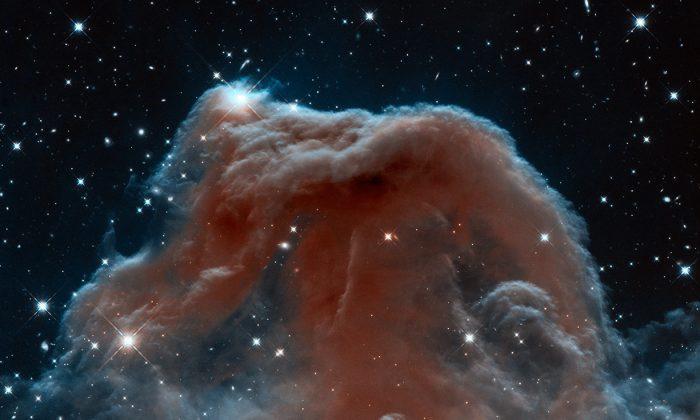We have compiled some of the most beautiful and fascinating space photos featured as NASA’s “Astronomy Picture of the Day” in recent months. With spacecraft such as Cassini capturing never-before seen views and improving space telescope imaging, looking at space has never been so vivid or awe-inspiring.
Take a few moments to imagine yourself on a spacecraft traveling light-years to observe these wonders of the universe first-hand.
None of these photos are artists’ renderings, they are all images taken by spacecraft or with the use of space telescopes. The descriptions were written for NASA by astronomers and are edited here for length.
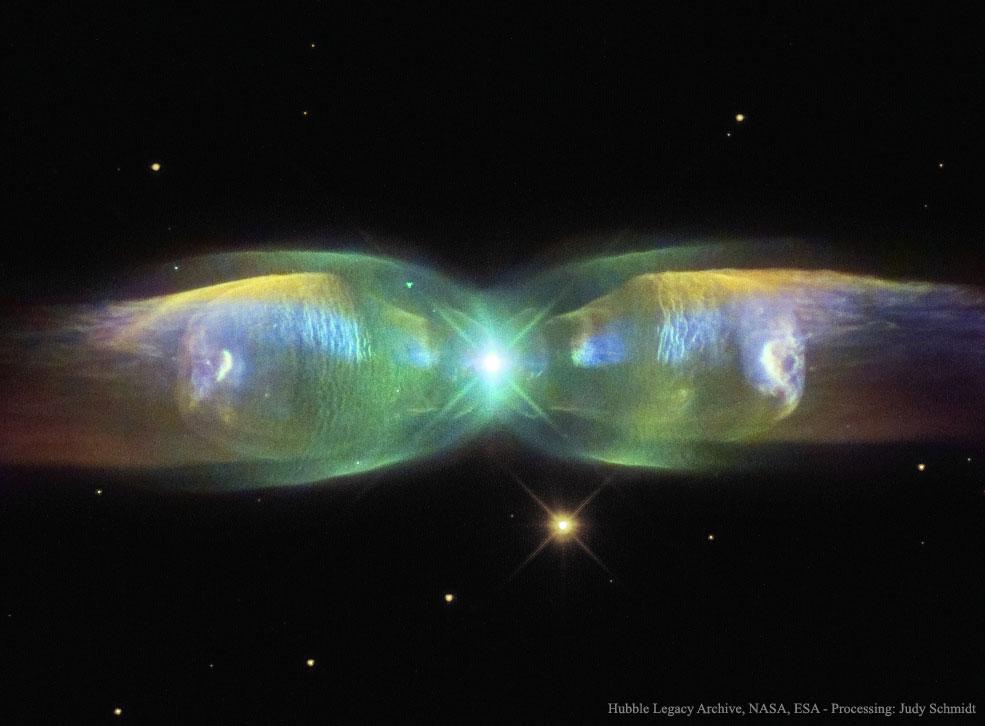
The M2-9 butterfly planetary nebula 2,100 light-years away shows the beauty of dying stars. In the center, two stars orbit inside a gaseous disk 10 times the orbit of Pluto. The expelled envelope of the dying star breaks out from the disk creating the bipolar appearance. Much remains unknown about the physical processes that cause planetary nebulae.
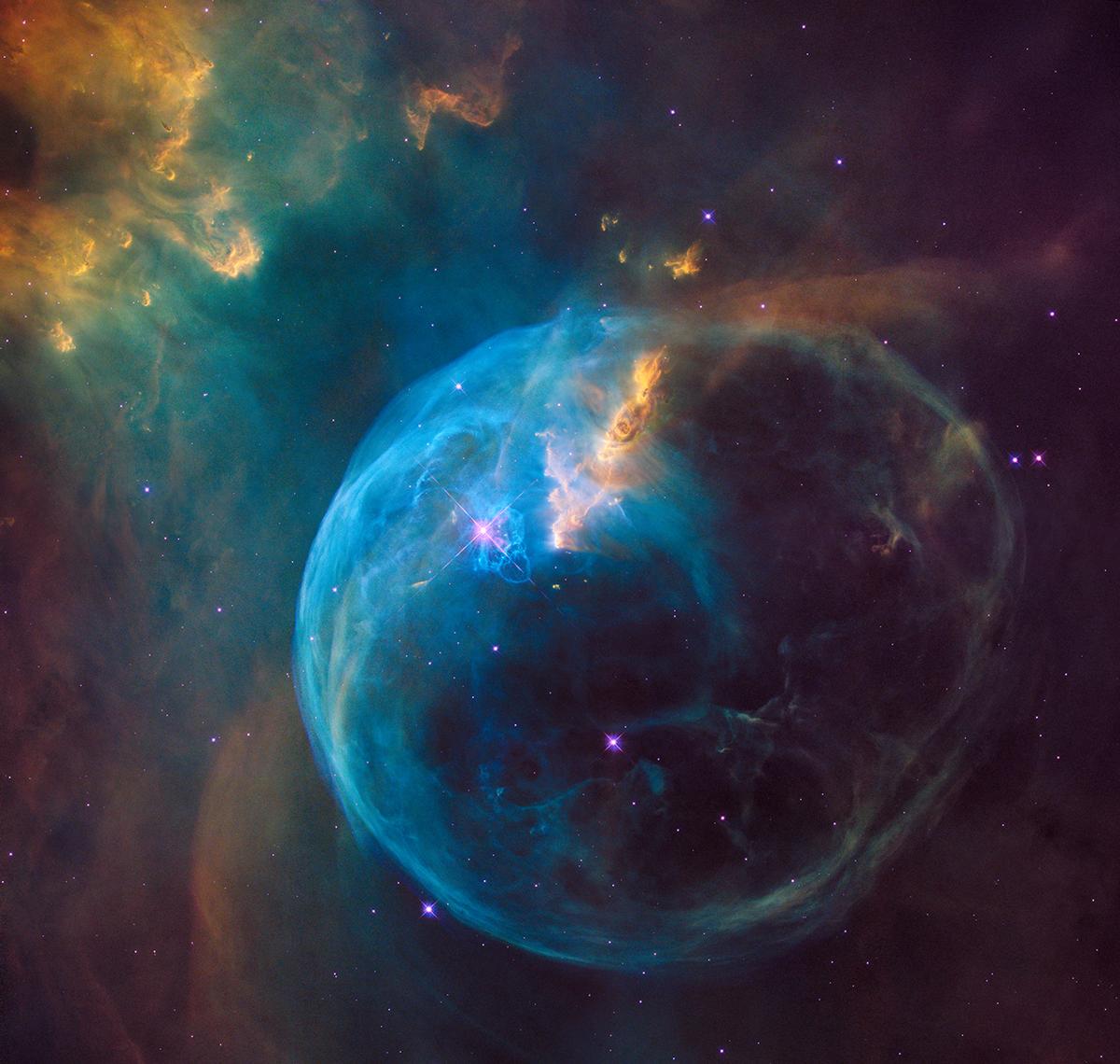
The Bubble Nebula, 7 light-years in diameter, offers evidence of violent processes at work. Above and left of the Bubble’s center is a hot, O-type star, several hundred thousand times more luminous and around 45 times more massive than the sun. A fierce stellar wind and intense radiation from that star has blasted out the structure of glowing gas against denser material in a surrounding molecular cloud. The intriguing Bubble Nebula is about 7,100 light-years away.
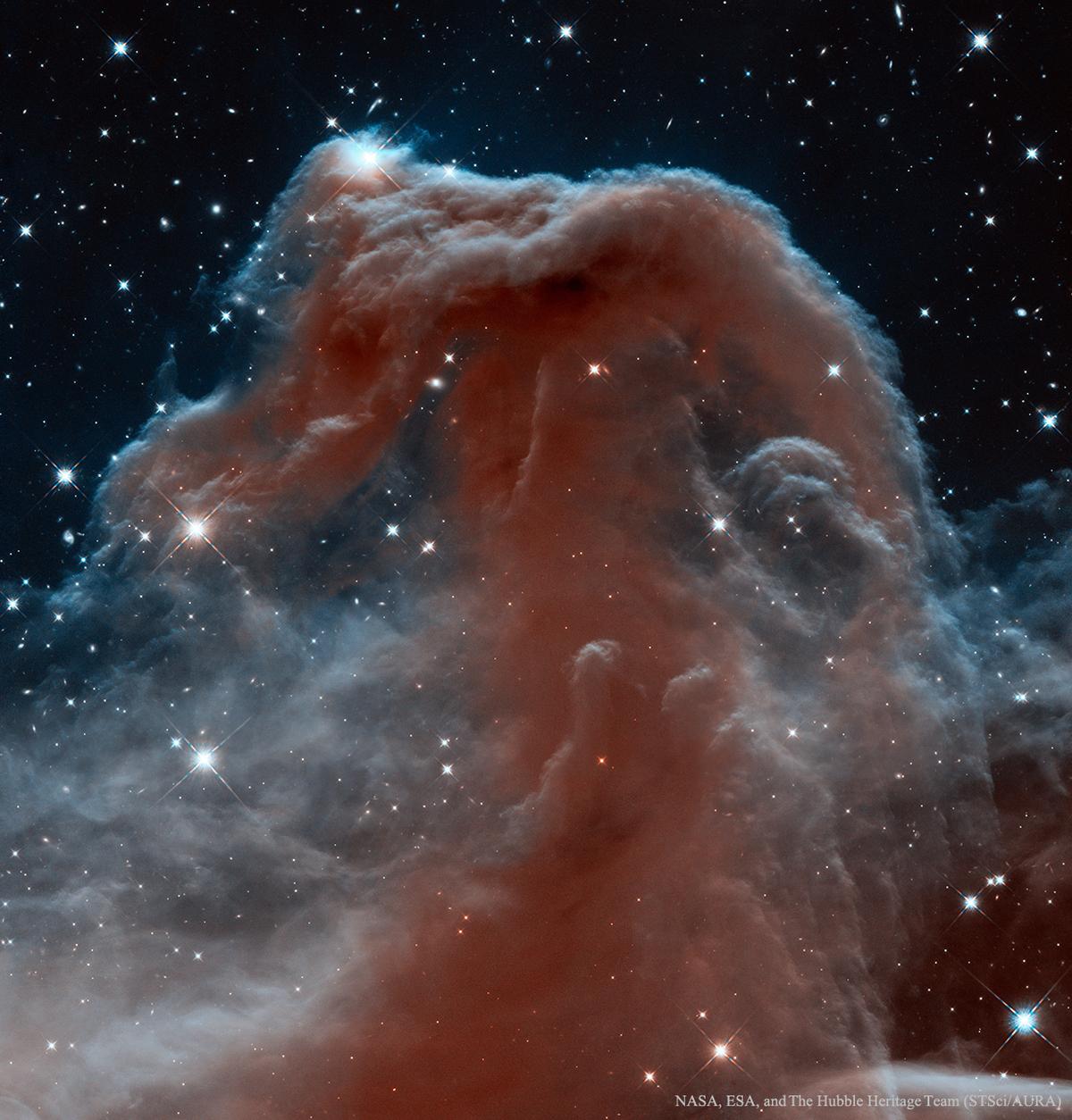
While drifting through the cosmos, a magnificent interstellar dust cloud became sculpted by stellar winds and radiation to assume a recognizable shape, that of a horse’s head. The Horsehead Nebula is embedded in the vast and complex Orion Nebula. The dark molecular cloud is roughly 1,500 light years distant. The Horsehead Nebula will slowly shift its apparent shape over the next few million years and will eventually be destroyed by the high energy starlight.
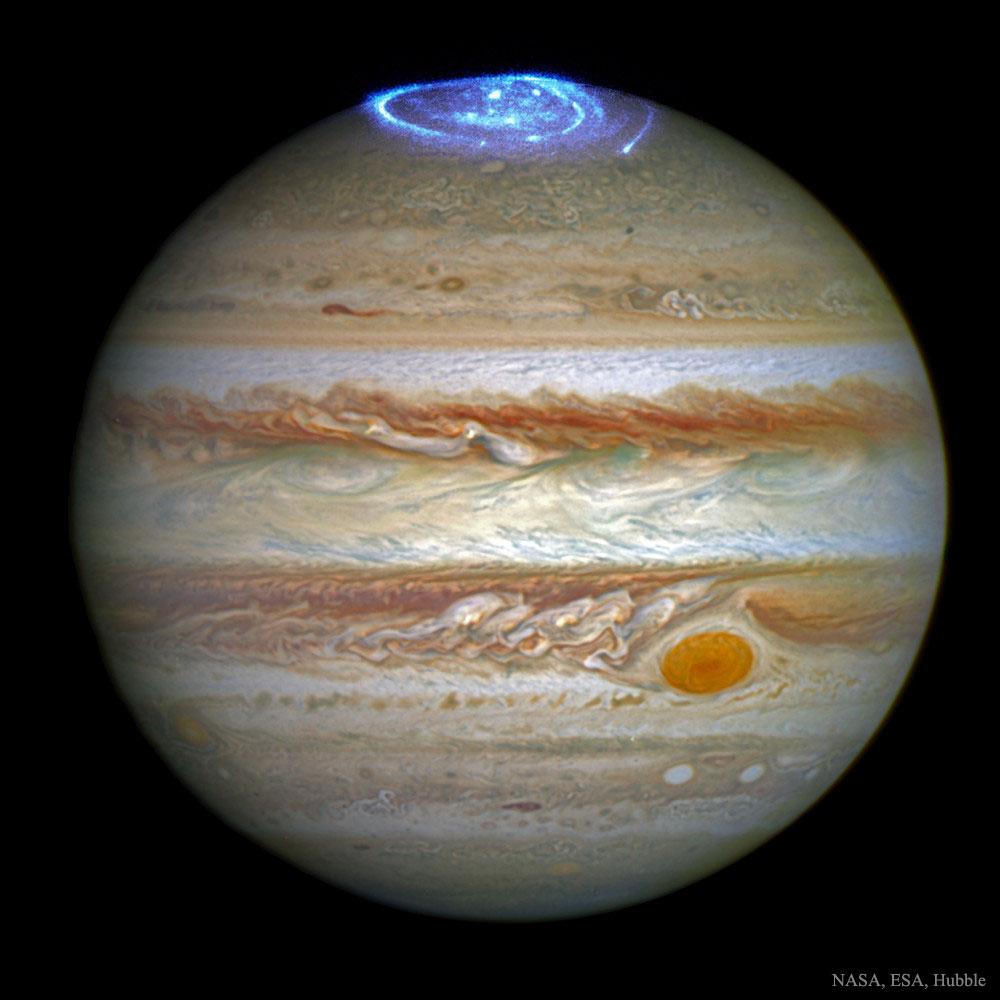
Jupiter has aurorae. Like Earth, the magnetic field of the gas giant funnels charged particles released from the sun onto the poles. As these particles strike the atmosphere, electrons are temporarily knocked away from existing gas molecules. Electric force attracts these electrons back. As the electrons recombine to remake neutral molecules, auroral light is emitted.
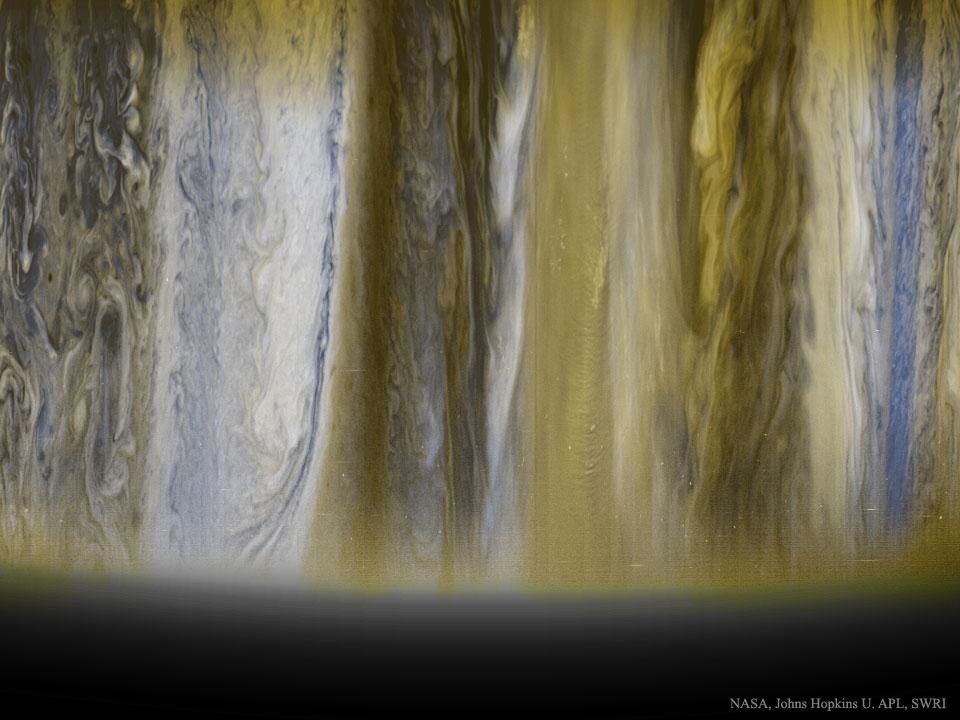
Jupiter’s clouds are seen in images taken by the New Horizons spacecraft on its way out to Pluto. Famous for its Great Red Spot, Jupiter is also known for its regular, equatorial cloud bands, visible through even modest sized telescopes.
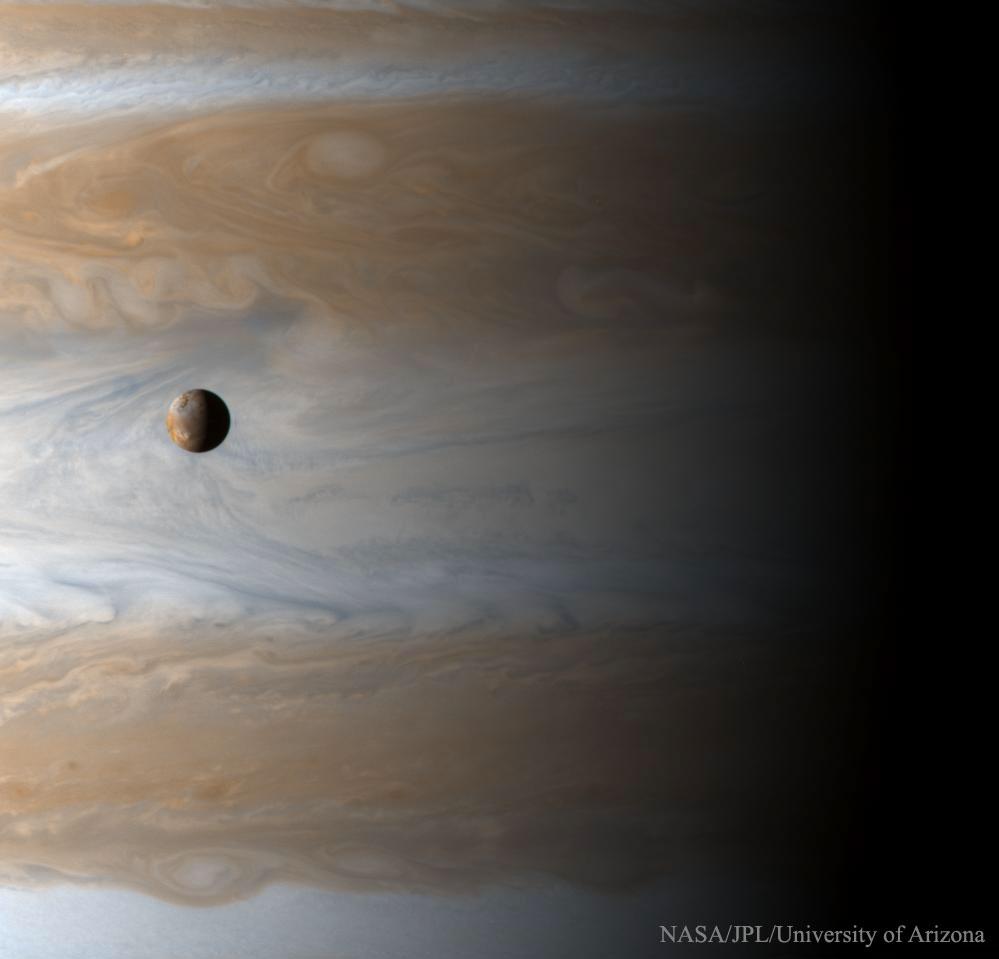
How big is Jupiter’s moon Io? The most volcanic body in the Solar System, Io (usually pronounced “EYE-oh”) is 3,600 kilometers in diameter, about the size of Earth’s moon. Gliding past Jupiter at the turn of the millennium, the Cassini spacecraft captured this awe inspiring view of active Io with the largest gas giant as a backdrop, offering a stunning demonstration of the planet’s relative size.
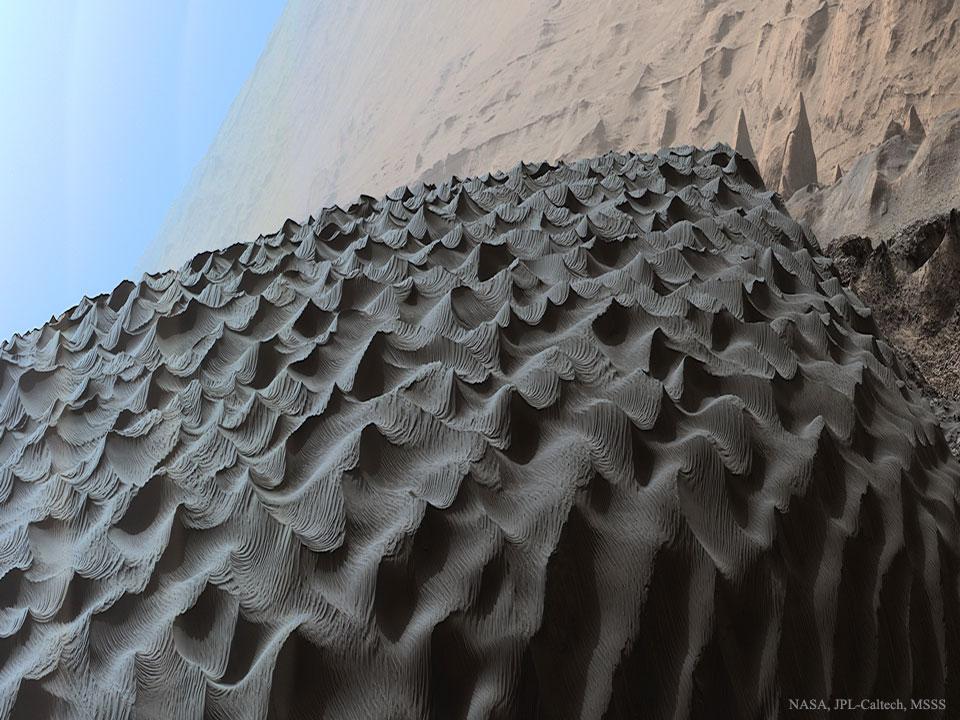
How does wind affect sand on Mars? To help find out if it differs significantly from Earth, the robotic Curiosity rover on Mars was directed to investigate the dark Namib Dune in the Bagnold Dune Field in Gale Crater. Namib is the first active sand dune investigated up close outside of planet Earth. Wind-created ripples on Earth-bound sand dunes appear similar to ripples on Mars, with one exception. The larger peaks visible on dark Namib dune, averaging about 3 meters apart, are of a type seen only underwater on Earth. They appear to arise on Mars because of the way the thin Martian wind drags dark sand particles.
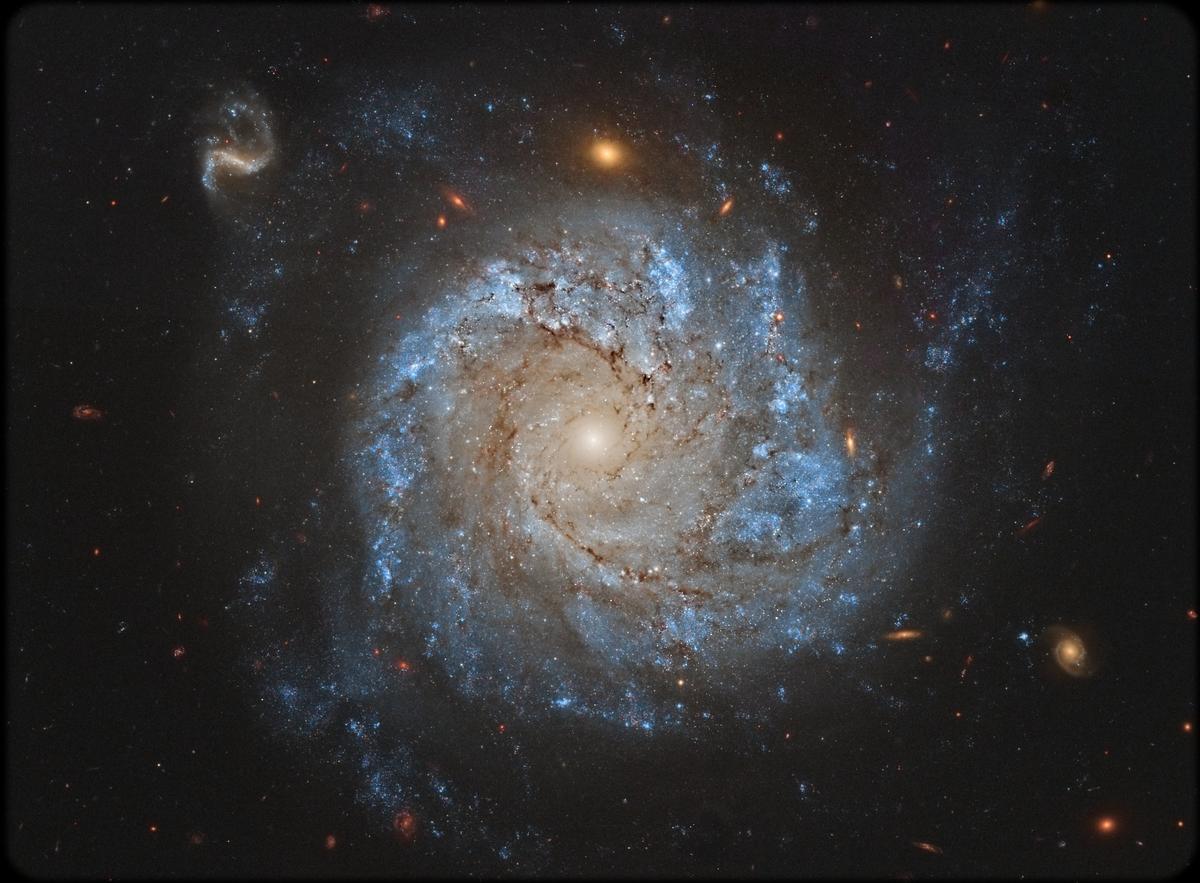
A gorgeous spiral galaxy some 100 million light-years distant, NGC 1309 lies on the banks of the River constellation (Eridanus). NGC 1309 spans about 30,000 light-years, making it about one third the size of our larger Milky Way galaxy. Bluish clusters of young stars and dust lanes are seen to trace out NGC 1309’s spiral arms as they wind around an older yellowish star population at its core.
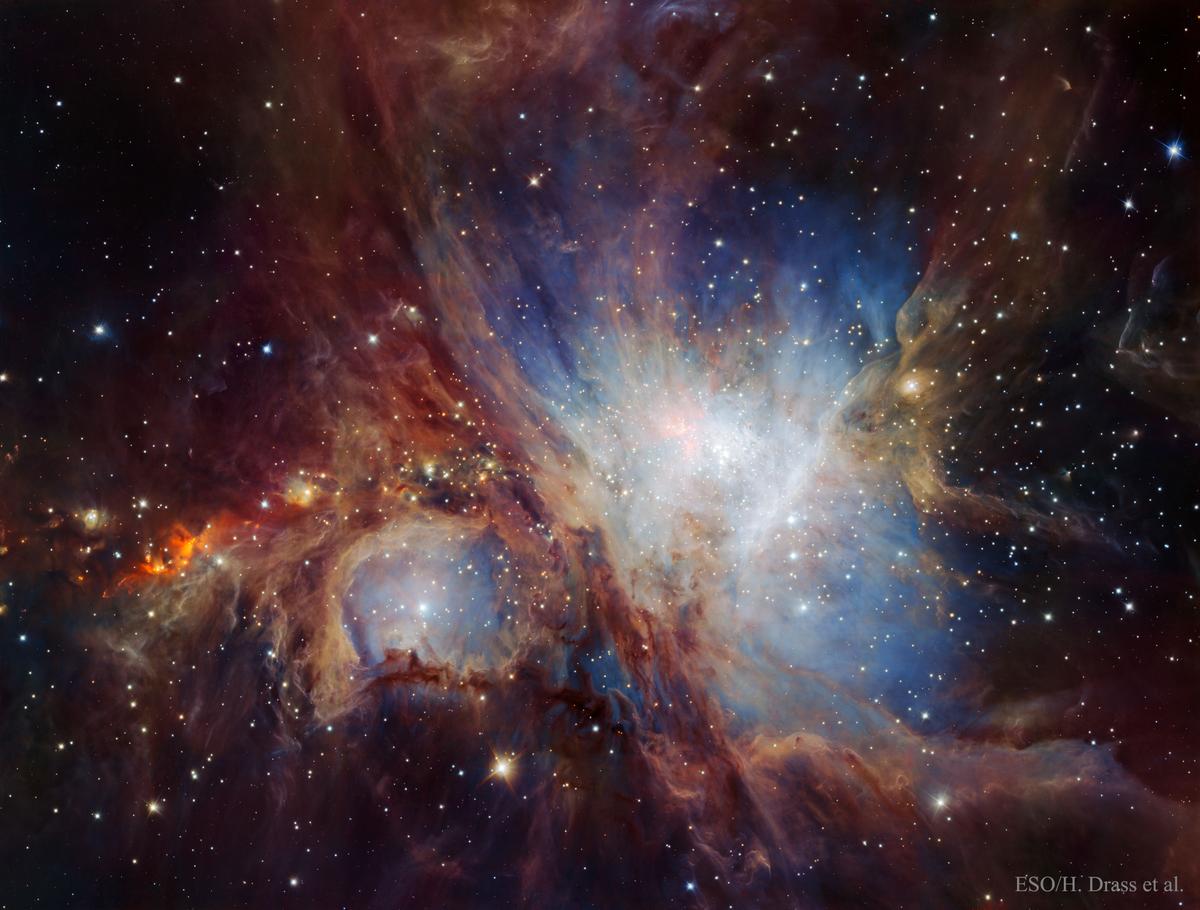
The deepest infrared image of the Orion Nebula has uncovered a bonanza of previously unknown low-mass stars and—quite possibly—free floating planets. The Orion Nebula, 1,300 light years away, is the closest major star-forming region to Earth.
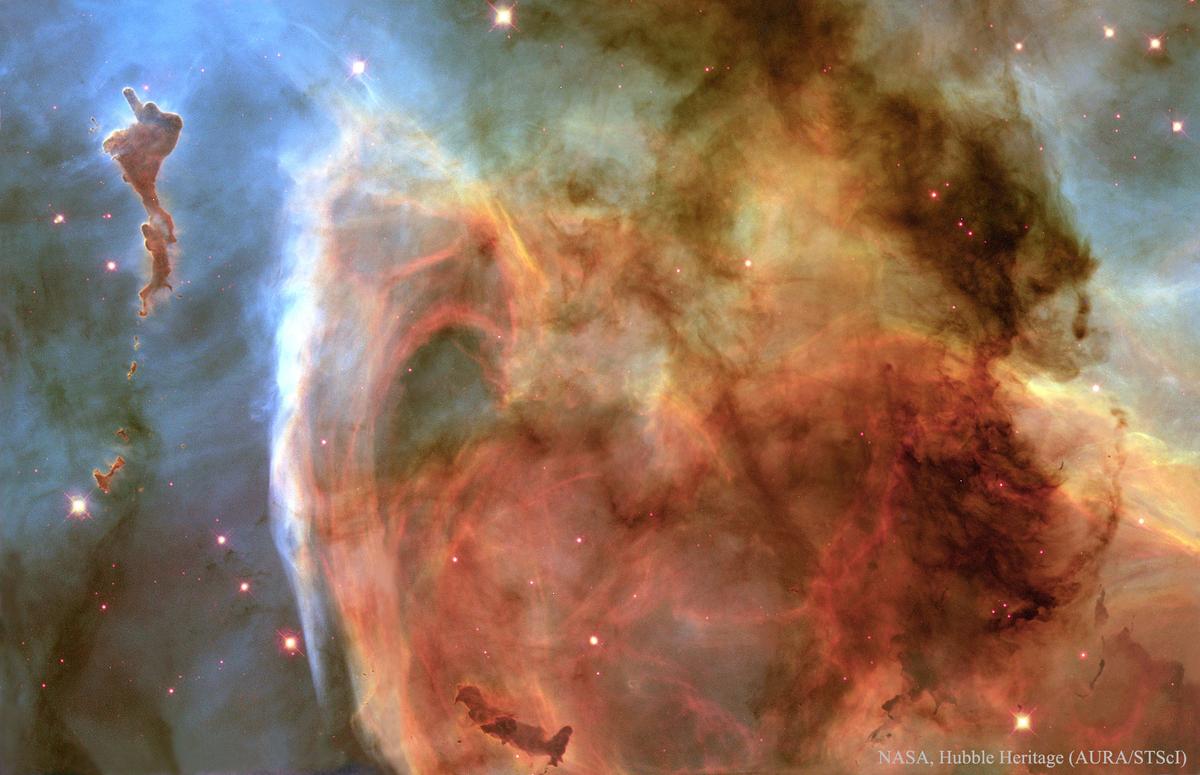
The dark dusty Keyhole Nebula gets its name from its unusual shape. The looping Keyhole, in this featured classic image by the Hubble Space Telescope, is a smaller region inside the larger Carina Nebula. Dramatic dark dust knots and complex features are sculpted by the winds and radiation of the Carina Nebula’s many massive and energetic stars. The region lies about 7,500 light-years away. The Keyhole Nebula was created by the dying star Eta Carina, out of the frame, which is prone to violent outbursts during its final centuries.

